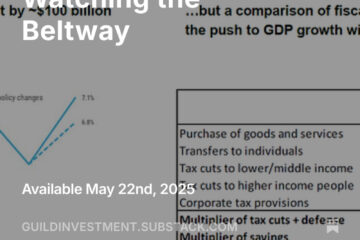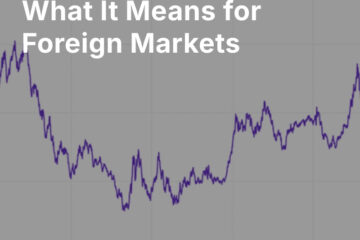The Eurozone manufacturers’ PMI, a monthly survey of purchasing managers’ views about current trends in manufacturing, fell to 45.6 in September, down from 47 in August. Anything below 50 is contractionary, and the September reading is the lowest in almost seven years. Germany’s manufacturing PMI fell to 41.4 in September, also going deeper into contraction — the worst reading in a decade.
The message came through loud and clear to global markets — the Eurozone economy is reaching stall speed and probably getting close to recession. These dismal data arrived not long after the European Central Bank cut interest rates further into negative territory and announced plans to begin its asset purchase program again.
The Euro’s Woes Could Lead To Troublesome Dollar Strength

At the same time that Mario Draghi, the outgoing ECB chief, passed the baton of this new, open-ended easing plan to his successor, Christine Lagarde, he called on the Eurozone’s surplus economies — notably Germany — to increase spending and provide a desperately needed fiscal stimulus. Thus far, only the Dutch have taken the hint, announcing a 2020 budget which would use up an additional percentage point of the country’s “fiscal space” (i.e., available budget surplus). Germany, which is running a surplus even as it moves towards recession, will be a tougher sell; it has a traumatic historical memory of the disasters that can follow on runaway spending. Whether the Germans can be persuaded that a little fiscal loosening could save the Eurozone (and all the benefits it has provided them) remains to be seen.
In any event, a diving European economy and further easing from the ECB has global currency implications. Several weeks ago, rumors abounded that the U.S. administration was contemplating moves to intervene in currency markets to weaken the U.S. dollar — though at the time, Treasury Secretary Mnuchin commented, “Situations could change in the future but right now we are not contemplating an intervention.”
What could put such intervention on the table? Sharp declines in the Euro; a failure for the U.S. economy to strengthen from its recent deceleration; or a re-escalation of U.S. trade actions against China — are all scenarios that come to mind.
Such intervention, if it did occur, it would cause significant volatility in global currency markets — on a level not seen for decades.
Of course, currency volatility — and the very prospect of currency volatility — further strengthens the case for gold. While gold can rise because it is functionally a currency that is not subject to central bank manipulation, it can also rise because one of its other roles is as a vote of “no confidence” in the competence of government policy.
Investment implications: Euro area weakness will continue to put pressure on the Euro, and contribute to a stronger dollar. The current U.S. administration has mooted the possibility of intervention in currency markets to weaken the dollar. Eurozone recession is not the only eventuality that might tempt them — U.S. economic weakness in the face of a recalcitrant Fed, or pain from China tariffs finally making it to the U.S., could also put the idea on the administration’s front burner. The consequence would be severe volatility in global currency markets — and a big boost for gold.


